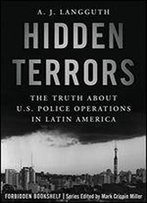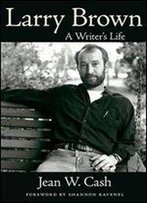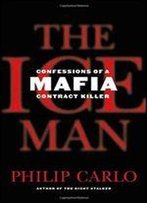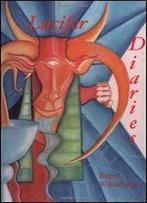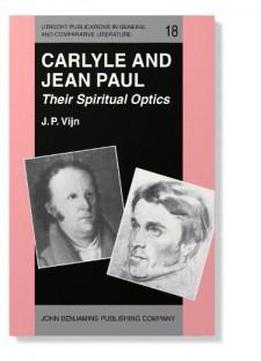
Carlyle And Jean Paul: Their Spiritual Optics (utrecht Publications In General And Comparative Literature)
by Dr. J.P. Vijn /
1982 / English / PDF
35.6 MB Download
It has always been thought difficult, if not impossible, to define
what the philosophy of Carlyle was. Ever since the publication of
It has always been thought difficult, if not impossible, to define
what the philosophy of Carlyle was. Ever since the publication ofSartor Resartus
Sartor Resartus in 1833-1834, the view that Carlyle had a
theistic conception of the universe has been defended as well as
opposed. At a time, therefore, when Carlyle’s work as a whole is
being reappraised, his philosophy should first and foremost be
dealt with. Carlyle’s life-philosophy is based on the inner
experience of a process of ‘conversion’, which set in with an
incident that occurred to him at Leith Walk, Edinburgh. This study
– which settles the old question of the date of the incident –
demonstrates that the inner struggle, the dynamics of which are
described most fully in
in 1833-1834, the view that Carlyle had a
theistic conception of the universe has been defended as well as
opposed. At a time, therefore, when Carlyle’s work as a whole is
being reappraised, his philosophy should first and foremost be
dealt with. Carlyle’s life-philosophy is based on the inner
experience of a process of ‘conversion’, which set in with an
incident that occurred to him at Leith Walk, Edinburgh. This study
– which settles the old question of the date of the incident –
demonstrates that the inner struggle, the dynamics of which are
described most fully inSartor
Sartor, is analogous to the Jungian
process of individuation. For the first time in critical
literature, the basic ideas of Carlyle’s philosophy are thus linked
to depth psychology and shown to be analogous to the fundamental
concepts of Analytical Psychology.
, is analogous to the Jungian
process of individuation. For the first time in critical
literature, the basic ideas of Carlyle’s philosophy are thus linked
to depth psychology and shown to be analogous to the fundamental
concepts of Analytical Psychology.
In recent criticism, it has been asserted that the crisis recorded
in
In recent criticism, it has been asserted that the crisis recorded
inSartor
Sartor is akin to the crisis of doubt said to underlie
Jean Paul’s “Rede des todten Christus” (1796), which is probably
the first poetic expression of nihilism in European literature and
has become a classic. Apart from demonstrating that, in the last
fifty years at least, the “Rede” has erroneously been interpreted
as a dream of annihilation, this book invalidates the view of Jean
Paul as victim of the skepticism of his age, and argues that,
contrary to what is usually maintained, the “Rede” is not the
document of a crisis, but of a belief which had become antiquated
and obsolete for Carlyle.
is akin to the crisis of doubt said to underlie
Jean Paul’s “Rede des todten Christus” (1796), which is probably
the first poetic expression of nihilism in European literature and
has become a classic. Apart from demonstrating that, in the last
fifty years at least, the “Rede” has erroneously been interpreted
as a dream of annihilation, this book invalidates the view of Jean
Paul as victim of the skepticism of his age, and argues that,
contrary to what is usually maintained, the “Rede” is not the
document of a crisis, but of a belief which had become antiquated
and obsolete for Carlyle.
